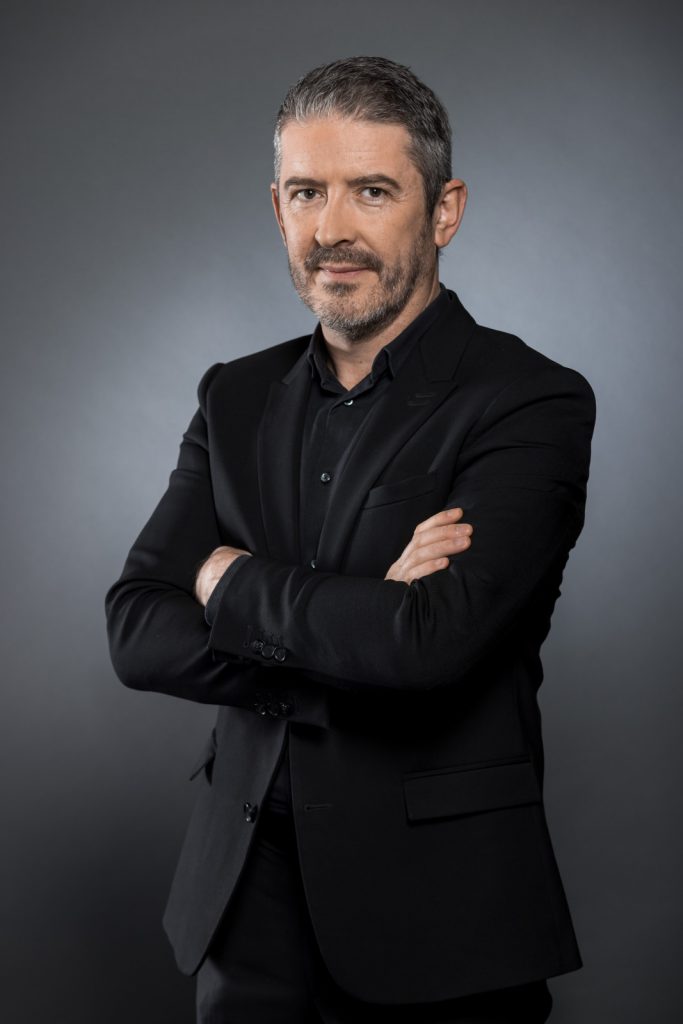Colonel Mustard: Gilles Vidal, design director at Renault since 2020, is at the creative helm of the team designing the Renault 5 prototype.
Le Supercinq: Based on the marque’s classic, the 2021 Renault 5 prototype is an all-electric vehicle, so the bonnet air intake hides the charging hatch, the rear lights include aero flaps, and the fog lamps in the bumper are daytime running lights.
Gilles Vidal, Renault’s new design director, is a genuine car man — he entered this world in a car, born in the backseat, and still lives and breathes cars. In fact, he’s the man behind not only some of the most important vehicles on the road, but also some of the prettiest exteriors cooked up over the last couple of decades.
 Gilles Vidal.
Gilles Vidal.Vidal joined Citroen in 1996 and played a vital role in the styling of the Berlingo and the rally Saxo, while he later shaped Peugeot’s identity with the SR1 — a beautiful creation that, for its time, looked like something from the realms of sci-fi.
He then played an instrumental role in further shaping what would later be revealed as the 08 series for Peugeot, with the 208, 2008, 3008 and 508 range.
In 2020, he joined Renault and played a vital part in welcoming a new era for the brand.
I sat down with him and asked some design-related questions.
When did you know your future lay in car design?
Both my father and grandfather were car dealers; they collected classic cars and bought World War II equipment from the Americans, so I’ve always had that influence.
My father also sketched cars. While he wasn’t a designer in the traditional sense, his illustrations were excellent. I also took to drawing cars and sketching.
I eventually decided to go into an art direction and attended art school in Switzerland with the idea of becoming a graphic designer. I ultimately decided that product design was a better fit and specialised in transportation design.
What is the process for dreaming up something as dramatic as a
concept car?
In the studio, we challenge ourselves to find something fresh and unique. You project yourself into the future.
From initial sketches to a car driving on the road, the process can be anything between three to four years, so you have to get into that mind space.
The amount of creative ambition that goes into designing new cars is immense and you have to be a little scared about what it is that you do, while you do it.
The challenge is thinking that far forward while staying relevant to the brand and adapting to the DNA of that respective brand. It’s also not a matter of just sketching something and going with it. The process requires dozens of sketches with constant adaptations.
What are the stylistic challenges of electric vehicles?
I see it as more opportunities than challenges, really. With less space required for mechanical components, we can do more. With the Megane E-Tech platform, we could utilise bigger wheels and push them further back into the corners. It also has a bigger interior compared to the current Megane.
In essence, the ratio improves. We can do more with less.
Where does the engineering department become involved in conceptualising a new car?
They are present from the very beginning. Even during the initial sketches. We have a discussion early on in the process explaining to them this is what we want to do and this is the size we want.
They try hard to accommodate our wishes, and if it’s beyond the reasonable limit, we work together to find the best solution.
Ultimately, anything is possible — it depends on how much money you are willing to spend and, naturally, if it’s viable. It’s about reaching a mutual understanding of what is a good car and fulfilling that vision as much as possible.
What is your favourite design?
I look at it more as who was the best designer, and for me, that’s Marcello Gandini, who styled the Lamborghini Countach, the Lamborghini Miura and Maserati Khamsin but he also did the first-generation Renault Trafic. He did the most unique, mythical cars in history but could also do practical ones. He can take any project from any client and create the most fantastic product. That’s why I’d say every car he’s ever designed is a reference in car design.
Vidal is a car guy and one who shares his love of the craft through some of the most beautifully styled machines around. When our interview concluded, and formalities were signed and sealed, he cryptically alluded to anecdotes about the Miura’s first appearance and exactly how the Countach got its name, all the while beaming from ear to ear.
His love of design and reverence for Gandini’s work has come full circle. Renault plans to relaunch its iconic Renault 5 Turbo, a car Gandini designed as part of its plan to modernise its icons and democratise 100% electric compact cars.
With Vidal at the creative helm, and based on what we’ve seen from the Prototype R5, it’s safe to say Renault’s passion for unique, jaw-dropping styling executions is still very, very much alive.